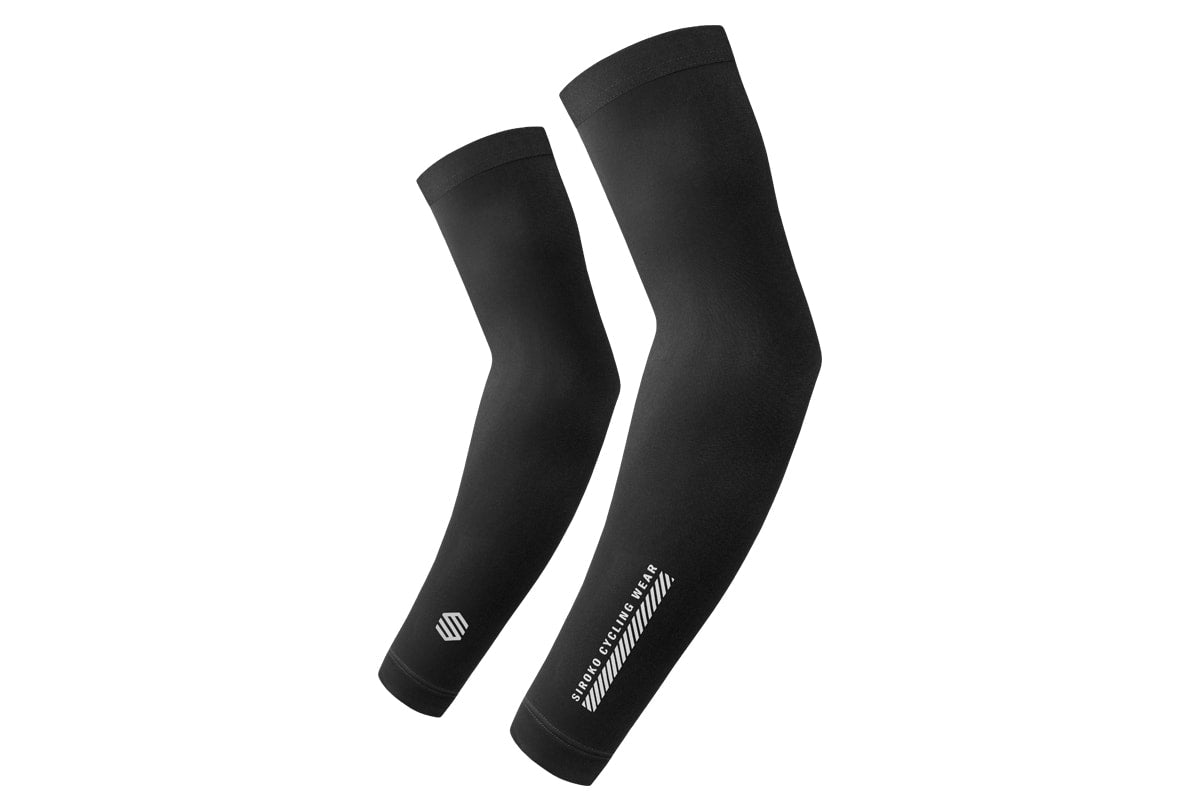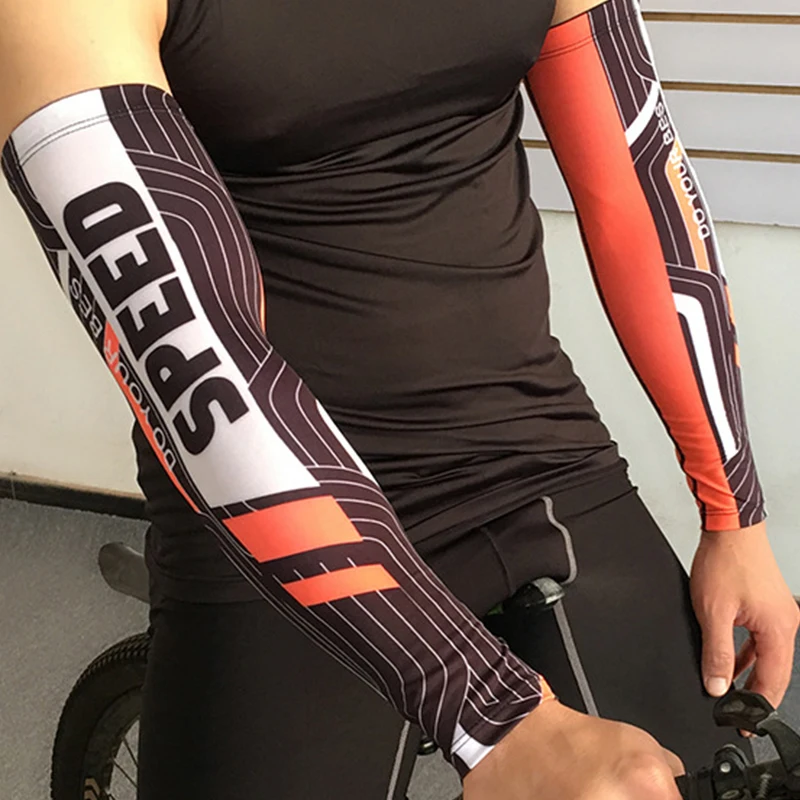The Role of Arm Sleeves in Cycling
Arm sleeves for cycling have gained popularity among cycling enthusiasts due to their multifunctional benefits. These sleeves serve various purposes, including enhancing performance, protecting against weather elements, and preventing injuries. By selecting the right arm sleeves, cyclists can enjoy a more comfortable and efficient riding experience.
Factors to Consider When Choosing Arm Sleeves for Cycling
When selecting arm sleeves for cycling, there are several crucial factors to consider to ensure a pleasant and effective cycling experience. These factors include material, fit, compression level, UV protection, and breathability.
Firstly, the material of arm sleeves for cycling plays a significant role in determining comfort and functionality. Look for sleeves made from moisture-wicking fabrics that help keep the skin dry and cool during intense rides. Some sleeves may also incorporate antibacterial treatments to prevent unpleasant odors.
Fit is another essential factor to consider when purchasing arm sleeves for cycling. A proper fit ensures optimal comfort and prevents the sleeves from sliding down or causing discomfort during long rides. Measure your arm circumference and compare it with the manufacturer’s size chart to ensure the best fit.
Compression level is a critical aspect of arm sleeves for cycling, as it can enhance performance and aid in recovery. A moderate level of compression can improve blood flow, reduce muscle fatigue, and alleviate soreness. However, excessive compression may restrict movement and cause discomfort.
UV protection is vital for cyclists who frequently ride in sunny conditions. Look for arm sleeves that offer UPF (Ultraviolet Protection Factor) ratings to shield your skin from harmful UV rays. A UPF rating of 30 or higher is recommended for adequate sun protection.
Lastly, breathability is a crucial factor for maintaining comfort during long rides. Breathable arm sleeves allow air to circulate, preventing overheating and excessive sweating. Ensure that the sleeves you choose have proper ventilation to keep you cool and dry.
By considering these factors, cyclists can select arm sleeves that cater to their specific needs and preferences, ultimately enhancing their overall cycling experience.
Top Arm Sleeves for Cycling: A Product Showcase
When it comes to high-quality arm sleeves for cycling, several reputable brands stand out. Among them are Castelli, Pearl Izumi, and Sportful, each offering unique features and benefits to cater to various cycling needs.
Castelli
Castelli is a well-known brand in the cycling world, producing high-performance apparel for both amateur and professional cyclists. Their arm sleeves, such as the Castelli NanoFlex+ Arm Warmers, offer excellent weather protection and flexibility. The NanoFlex+ material provides water resistance, keeping cyclists dry during wet rides, while the stretchy fabric ensures a comfortable fit. However, these arm sleeves may be pricier than other options on the market.
Pearl Izumi
Pearl Izumi is another popular brand offering a range of cycling apparel, including arm sleeves. Their PI Elite Thermal Arm Warmers are designed for cold-weather protection, with a brushed interior that retains warmth and wicks moisture. These arm sleeves also feature a silicone grip at the top to prevent slipping, ensuring a secure fit. However, they may not be as breathable as some other options, making them less suitable for warm-weather rides.
Sportful
Sportful is an Italian brand specializing in cycling and skiing apparel. Their arm sleeves, such as the Sportful Hot Pack Arm Warmers, are known for their lightweight and breathable design. The Hot Pack Arm Warmers are made from Thermodrytex Plus fabric, which provides excellent insulation and moisture management. These arm sleeves also feature raw-cut edges for a seamless fit and increased comfort. However, they may not offer as much weather protection as other options, making them less suitable for extreme conditions.
By considering the unique features and benefits of each brand, cyclists can select arm sleeves that best meet their specific needs and preferences. It is essential to consider factors such as weather protection, breathability, fit, and price when choosing arm sleeves for cycling.
How to Measure Your Arm for Cycling Arm Sleeves
To ensure a proper fit and optimal performance, it is crucial to measure your arm correctly before purchasing arm sleeves for cycling. Follow these step-by-step instructions and utilize visual aids to assist you in the measurement process:
- Wear a short-sleeved shirt or be in a state of undress to accurately measure your arm circumference.
- Place a soft measuring tape around the widest part of your bicep. Ensure that the tape is level and not twisted.
- Record the measurement in centimeters or inches, depending on the manufacturer’s size chart.
- Repeat the process for the narrowest part of your forearm, just above the wrist.
- Compare your measurements with the manufacturer’s size chart to determine the best fit for your arm sleeves for cycling.
Visual aids, such as diagrams or videos, can help you understand the correct positioning and tension of the measuring tape. By accurately measuring your arm, you can ensure a comfortable and secure fit for your cycling arm sleeves, enhancing your overall cycling experience.
Maximizing the Benefits of Cycling Arm Sleeves: Tips and Tricks
Arm sleeves for cycling can provide numerous benefits, including enhanced performance, protection against weather elements, and injury prevention. To make the most of your cycling arm sleeves, consider the following tips and tricks:
Proper Care and Maintenance
To ensure the longevity and functionality of your arm sleeves for cycling, follow the manufacturer’s care instructions. Generally, it is recommended to wash them in cold water with a mild detergent and avoid using fabric softeners or bleach. Lay flat to dry or tumble dry on a low setting to prevent shrinkage and damage to the fabric.
Layering Techniques
Arm sleeves for cycling can be used in various layering techniques to accommodate changing weather conditions. Pair them with short-sleeved jerseys for mild temperatures or combine them with long-sleeved jerseys and jackets for added insulation during colder rides. Experiment with different combinations to find the perfect balance for your comfort and performance.
Adjusting Sleeve Height
Adjusting the height of your arm sleeves for cycling can help manage varying weather conditions. Roll or push the sleeves up or down to expose or cover more skin as needed. This simple adjustment can provide additional sun protection, warmth, or breathability as required.
By incorporating these tips and tricks, cyclists can maximize the benefits of their arm sleeves for cycling, ensuring a comfortable and enjoyable riding experience in various conditions.
Comparing Arm Sleeves to Alternative Cycling Apparel
While arm sleeves for cycling offer numerous benefits, it is essential to compare them with alternative cycling apparel to understand their advantages and disadvantages fully. Long-sleeved jerseys and jackets are common alternatives, each with unique features and purposes.
Long-Sleeved Jerseys
Long-sleeved jerseys provide full-arm coverage and are typically designed with moisture-wicking and breathable materials. They often include additional pockets for storage and may offer enhanced UV protection. However, they can be bulkier and less adaptable to changing weather conditions than arm sleeves for cycling.
Jackets
Cycling jackets offer the highest level of protection against wind, rain, and cold temperatures. They often include waterproof and insulated materials, making them ideal for extreme weather conditions. However, jackets can be heavy, cumbersome, and less breathable than arm sleeves for cycling, potentially leading to overheating and discomfort.
Advantages of Arm Sleeves for Cycling
Arm sleeves for cycling provide several advantages over alternative apparel. They are lightweight, compact, and easy to carry, making them ideal for varying weather conditions. Cyclists can quickly adjust sleeve height or remove them entirely as needed. Additionally, arm sleeves for cycling often provide UV protection, compression benefits, and improved aerodynamics.
By comparing arm sleeves for cycling with alternative apparel, cyclists can make informed decisions based on their specific needs, preferences, and riding conditions. The versatility and convenience of arm sleeves make them a valuable addition to any cyclist’s wardrobe.
Seasonal Considerations for Cycling Arm Sleeves
Arm sleeves for cycling can serve various purposes throughout the year, providing essential protection and benefits during different seasons. By understanding the role of arm sleeves in various seasons, cyclists can make informed decisions when selecting arm sleeves based on their specific needs and preferences.
Cold-Weather Protection
During colder months, arm sleeves for cycling can provide additional insulation, helping to maintain body heat and prevent hypothermia. Look for arm sleeves made from thermal materials with high insulation properties to ensure optimal warmth. Pair them with long-sleeved jerseys or jackets for added protection against the cold.
Sun Protection During Summer Rides
Summer rides expose cyclists to harmful UV rays, increasing the risk of sunburn and skin damage. Arm sleeves for cycling can offer UPF (Ultraviolet Protection Factor) ratings, shielding the skin from harmful rays. Opt for arm sleeves made from lightweight, breathable materials with high UPF ratings to protect your skin while keeping you cool and comfortable.
Versatility in Changing Conditions
Arm sleeves for cycling offer unmatched versatility in changing weather conditions. Cyclists can quickly adjust sleeve height or remove them entirely as needed. This flexibility makes arm sleeves an ideal choice for unpredictable weather, allowing riders to adapt and maintain comfort.
By considering the seasonal benefits of arm sleeves for cycling, cyclists can select the perfect pair for their specific needs, ensuring a comfortable and enjoyable riding experience in various conditions.
Cycling Arm Sleeves vs. Bracelets: A Brief Comparison
While both arm sleeves for cycling and bracelets serve to enhance cycling performance and provide additional functionality, arm sleeves offer several advantages over bracelets in various cycling scenarios.
Enhanced Protection and Support
Arm sleeves for cycling provide increased protection and support for the arms and muscles during cycling activities. The compression offered by arm sleeves can help reduce muscle fatigue, soreness, and the risk of injury. In contrast, bracelets offer limited protection and support for cyclists.
Versatility in Weather Conditions
Arm sleeves for cycling provide better adaptability to changing weather conditions. Cyclists can easily adjust sleeve height or remove them entirely, offering versatility in various temperature ranges. Bracelets, however, do not offer this level of adaptability, leaving cyclists with limited options in changing weather conditions.
Sun Protection
Arm sleeves for cycling often include UV protection, shielding the skin from harmful rays during summer rides. Bracelets do not provide the same level of sun protection, leaving cyclists more susceptible to sunburn and skin damage.
In summary, arm sleeves for cycling offer enhanced protection, support, versatility, and sun protection compared to bracelets. While bracelets have their place in fashion and casual activities, arm sleeves for cycling provide additional benefits and functionality that make them a preferred choice among cyclists.






